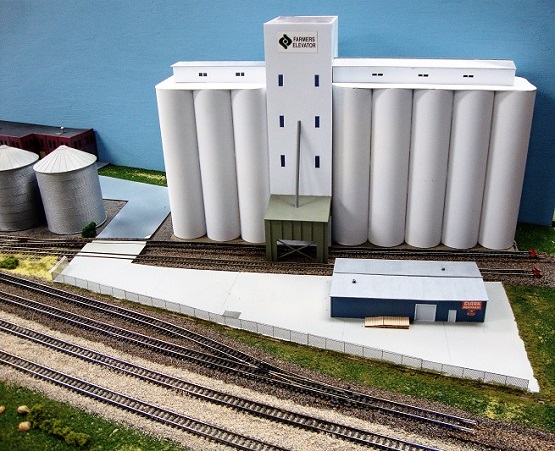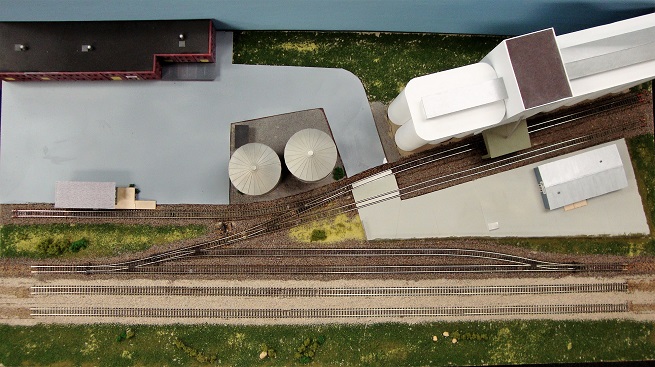Grain Elevator
| Diorama: | |
| Owner Name: | Brutus |
| Sponsor: | Brutus |
| Date Built: | 2017 |
| Date Updated: | |
| Status: | Active |
| Module Type: | 4' standard module |
| Length: | 4' |
| Width: | 2' |
| Skyboard: | 12" plywood |

Track
| Code | Brand | Turnouts | Crossovers | Passing Sidings | Yard Tracks | Industrial Spurs | Other Tracks |
|---|---|---|---|---|---|---|---|
| 80 | Atlas | five #6 (4 Peco, 1 Atlas) | none | none | none | none | none |
Electrical
| Wire | Connector | 110V | |
|---|---|---|---|
| Red | 12 gauge | PP-30 | |
| Yellow | 12 gauge | PP-30 | |
| Blue | 12 gauge | PP-30 | |
| Other | Yes |
| DCC Equipment: | UP5 |
| Powered Accessories: | wall wart for UP5 |
| Designer | Carpentry | Track | Wiring | Scenery | Oklahoma Scene | Route 66 Scene | Prototype RR |
|---|---|---|---|---|---|---|---|
| Brutus | Brutus | Brutus | Brutus | Brutus |

|
Track Plan

|
Sign Board
| One of the primary clients of Midwestern and great plains railroads were grain elevators. Oklahoma farmers would harvest their wheat, corn, oats, and pecans, load them onto farm trucks, and then haul them to the nearest grain elevator. There the crops would be stored until they could be loaded into box cars (and in later years, grain hoppers) for shipment. These elevators were often found every few miles along the railroad's right-of-way. Since paved highways usually paralleled the train tracks, small rural communities with schools, churches, and a store or two often developed near the elevators. The small Oklahoma towns like Afton, Fairland, and Chelsea still exist, but the grain elevators are now much larger and farther apart, requiring farmers to truck their harvest a much longer distance. |
Description & History
| Ths module has a short siding plus two spurs for the grain elevator and one for the loading dock. |